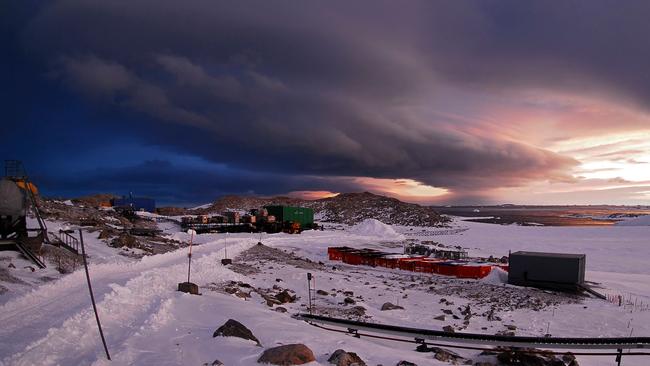Warmer Antarctica sparks global fears
Antarctica recorded an unprecedented heatwave during its past summer, prompting fears for the effects of warming across the globe.

Antarctica, the coldest place on Earth, recorded an unprecedented heatwave during its past summer, prompting fears for the future of its wildlife and the effects of warming across the globe.
Temperatures rose well above the average for three consecutive days in January — the technical definition of a heatwave — over Australia’s Casey station on the eastern side of the continent.
Just over two weeks later, the record for Antarctica’s highest temperature was broken twice as the heat plume spread across the ice mass.
Casey station thermometers did not dip below freezing for the period between January 23 and January 25, and exceeded average temperatures over the past 30 years by several degrees.
On January 24, its highest maximum of 9.2C was recorded — almost 7C above the 30-year mean for January.
By February, the heat was concentrated in the Antarctic peninsula at the northernmost part of the continent.
At Argentina’s Esperanza research station on the peninsula, a new Antarctic maximum temperature of 18.4C was recorded on February 6. Only three days later, this was beaten when 20.75C was reported at Brazil’s Marambio station, on Seymour Island east of the peninsula.
Three of the authors of the study at Casey station said while Antarctica may be isolated from the rest of the continents by the Southern Ocean, its warming had worldwide impacts.
Antarctica, they told The Conversation website, drove the global ocean conveyor belt, a constant system of deep-ocean circulation that transfers oceanic heat around the planet.
Melting ice sheets added to global sea level rises.
In their paper, scientists from the University of Wollongong, Australian Antarctic Division, University of Tasmania, and University of Santiago, Chile, identified periods of highly unusual warmth that affected Antarctica’s ecosystems.
The Chileans, studying mosses on King George Island in the South Shetland Islands, also registered the spike in temperatures. While a typical December-February period would see temperatures rising above 14C only 3 per cent of the year on the island, this past summer saw that proportion jump to 14 per cent.
The success of global efforts to reduce ozone-depleting chlorofluorocarbon chemicals was one cause of this summer’s high temperatures, together with background climate warming. As the ozone hole over Antarctica has closed, strong westerly winds have eased, allowing rising temperatures to reach regions such as Casey station that had previously been shielded, Professor Robinson said. The Casey station study was published in the Global Change Biology journal.
The Times



To join the conversation, please log in. Don't have an account? Register
Join the conversation, you are commenting as Logout